The world of botany offers a diverse and fascinating array of flowers, each unique in its characteristics and charm. This compilation of 100 flowers that start with the letter “U” introduces you to a variety of species from different regions and habitats. From the striking blooms of the Urn Plant and the delicate blossoms of Utricularia to the resilient and spiny gorse species like Ulex, these flowers are notable for their beauty, adaptability, and ecological significance. Whether you’re an avid gardener, a plant enthusiast, or simply curious, this list showcases the remarkable diversity found within the plant kingdom.
Umbrella Plant

- Description: Known scientifically as Cyperus alternifolius, this plant features tall, slender stems topped with umbrella-like clusters of green bracts.
- Habitat: Native to Madagascar, it thrives in wetlands and along riverbanks.
- Uses: Popular as a houseplant for its unique appearance and low maintenance.
Ursinia
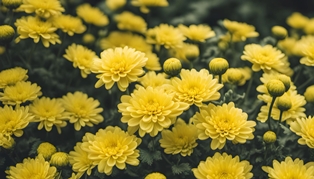
- Description: A genus of flowering plants in the daisy family, often displaying bright yellow or orange petals.
- Habitat: Common in South African regions.
- Uses: Ornamental, used in gardens and landscaping.
Ulex (Gorse)

- Description: A spiny evergreen shrub with bright yellow, coconut-scented flowers.
- Habitat: Found in Europe, particularly on heathlands and coastal areas.
- Uses: Provides shelter for wildlife and used in soil stabilization.
Urn Plant (Aechmea)

- Description: Features a central rosette of stiff, arching leaves and a bright pink or red bract with blue flowers.
- Habitat: Native to South America, especially Brazil.
- Uses: Popular as a decorative houseplant for its striking appearance.
Utricularia (Bladderwort)
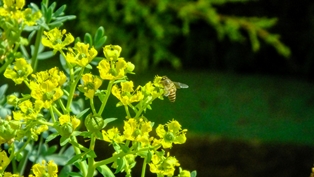
- Description: An aquatic or terrestrial carnivorous plant with small bladder-like traps.
- Habitat: Found in wetlands and ponds worldwide.
- Uses: Known for its unique carnivorous nature, used in aquatic gardening.
Uvularia (Merrybells)
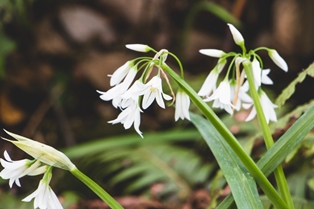
- Description: Perennial plants with delicate, drooping yellow flowers.
- Habitat: Native to North America, typically in woodlands.
- Uses: Grown for ornamental purposes in shade gardens.
Uncinia
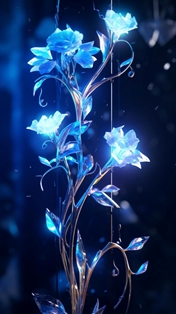
- Description: A genus of tufted, grass-like plants with colorful, spiky seed heads.
- Habitat: Found in the Southern Hemisphere, especially in New Zealand.
- Uses: Ornamental grasses used in garden borders and landscaping.
Urena
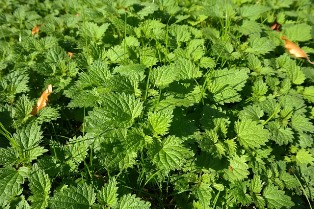
- Description: A genus of flowering plants with pink or purple hibiscus-like flowers.
- Habitat: Common in tropical and subtropical regions.
- Uses: Some species are used for medicinal purposes and fiber production.
Urceolina
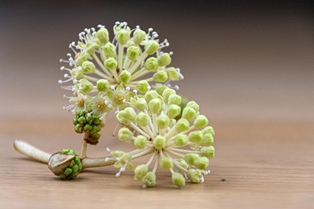
- Description: Features striking, bell-shaped flowers, often in shades of red, yellow, or green.
- Habitat: Native to South America.
- Uses: Cultivated as ornamental plants for their unique and beautiful flowers.
Urospermum
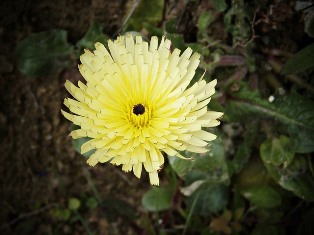
- Description: A genus of flowering plants with dandelion-like flowers, usually yellow.
- Habitat: Found in Mediterranean regions.
- Uses: Occasionally used in wildflower gardens and for soil erosion control.
Urn Orchid (Cymbidium)

- Description: Known for their long-lasting, fragrant flowers that come in various colors.
- Habitat: Native to Asia and Australia.
- Uses: Popular in the floral industry and as ornamental houseplants.
Upland Larkspur

- Description: Features tall spikes of blue or purple flowers.
- Habitat: Found in meadows and prairies in North America.
- Uses: Grown for ornamental purposes and in wildflower gardens.
Utah Serviceberry

- Description: A deciduous shrub with white spring flowers and edible berries.
- Habitat: Native to the western United States.
- Uses: Used in landscaping and for its fruit, which attracts wildlife.
Uruguayan Firecracker Plant (Dicliptera suberecta)

- Description: Displays bright orange-red tubular flowers that attract hummingbirds.
- Habitat: Native to South America, particularly Uruguay.
- Uses: Grown in gardens for its vibrant flowers and wildlife attraction.
Umbrella Sedge

- Description: A type of sedge with umbrella-like clusters of leaves at the top of its stems.
- Habitat: Found in wetlands and along water bodies.
- Uses: Used in water gardens and for erosion control.
Urospermum dalechampii
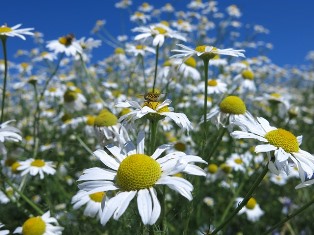
- Description: Bears bright yellow, dandelion-like flowers.
- Habitat: Native to the Mediterranean region.
- Uses: Occasionally used in wildflower gardens and for soil stabilization.
Urospermum picroides
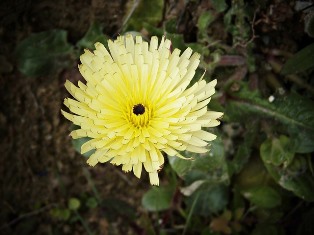
- Description: Similar to Urospermum dalechampii, with yellow flowers resembling dandelions.
- Habitat: Found in the Mediterranean and parts of Europe.
- Uses: Used in wildflower gardens and natural landscaping.
Ulex europaeus
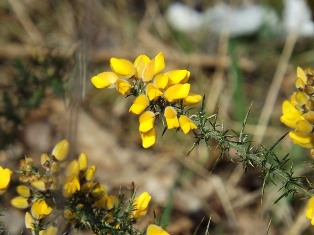
- Description: Known as common gorse, it has bright yellow flowers and sharp spines.
- Habitat: Native to western Europe.
- Uses: Provides habitat for wildlife and used in hedgerows.
Ulex minor
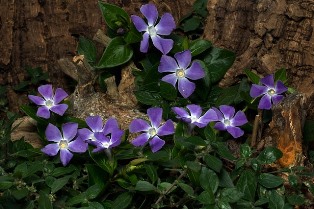
- Description: Also known as dwarf gorse, with smaller, yellow flowers.
- Habitat: Found in heathlands and moorlands in Europe.
- Uses: Used in natural landscaping and habitat restoration.
Umbrella Lily (Crinum moorei)

- Description: Features large, fragrant, trumpet-shaped white or pink flowers.
- Habitat: Native to South Africa.
- Uses: Grown as ornamental plants in gardens and landscapes.
Ulmus pumila (Siberian Elm)
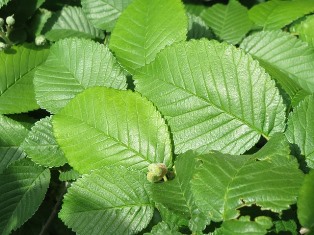
- Description: A fast-growing deciduous tree with small, greenish flowers.
- Habitat: Native to eastern Asia.
- Uses: Used as shade trees and for windbreaks.
Ursinia anthemoides

- Description: Displays daisy-like flowers in bright yellow or orange.
- Habitat: Native to South Africa.
- Uses: Popular in gardens for their colorful blooms and easy growth.
Utricularia alpina
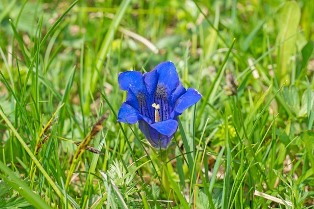
- Description: An epiphytic carnivorous plant with small, white to purple flowers.
- Habitat: Found in mountainous regions of Central and South America.
- Uses: Grown in specialized collections for its unique carnivorous nature.
Utricularia aurea

- Description: An aquatic carnivorous plant with yellow flowers.
- Habitat: Found in freshwater habitats in Asia and Australia.
- Uses: Used in aquariums and water gardens.
Utricularia bifida
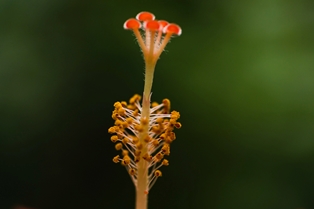
- Description: A small, terrestrial carnivorous plant with yellow flowers.
- Habitat: Native to Asia.
- Uses: Grown in specialized collections for its unique characteristics.
Utricularia bisquamata
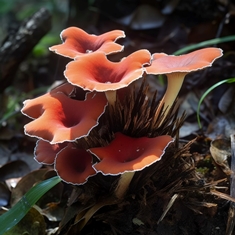
- Description: A terrestrial carnivorous plant with tiny, pale yellow flowers.
- Habitat: Found in South Africa.
- Uses: Cultivated by enthusiasts of carnivorous plants.
Utricularia cornuta

- Description: Known as the horned bladderwort, it has yellow flowers.
- Habitat: Found in wetlands in North America.
- Uses: Grown in bog gardens and by carnivorous plant collectors.
Utricularia dichotoma
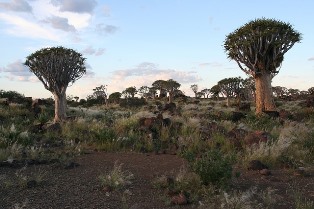
- Description: A terrestrial or aquatic carnivorous plant with purple flowers.
- Habitat: Found in Australia and New Zealand.
- Uses: Cultivated in specialized plant collections.
Utricularia gibba
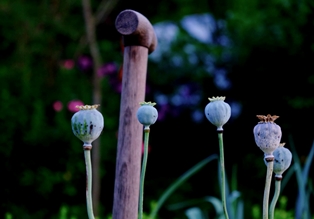
- Description: An aquatic carnivorous plant with small, yellow flowers.
- Habitat: Found in wetlands worldwide.
- Uses: Grown in water gardens and aquariums.
Utricularia graminifolia

- Description: A small, grass-like carnivorous plant with purple flowers.
- Habitat: Native to Southeast Asia.
- Uses: Used in aquariums and specialized plant collections.
Utricularia livida
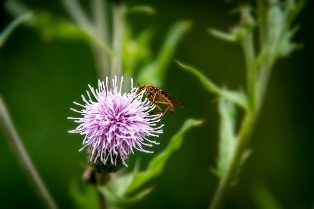
- Description: A terrestrial carnivorous plant with white to pale purple flowers.
- Habitat: Found in Africa and Central America.
- Uses: Grown by carnivorous plant enthusiasts.
Utricularia longifolia

- Description: Features long, narrow leaves and purple flowers.
- Habitat: Native to South America.
- Uses: Cultivated in specialized collections for its unique appearance.
Utricularia minor

- Description: Known as lesser bladderwort, it has small, yellow flowers.
- Habitat: Found in wetlands in North America and Europe.
- Uses: Grown in bog gardens and by enthusiasts of carnivorous plants.
Utricularia multicaulis
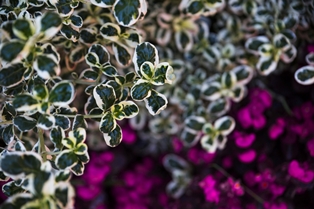
- Description: A small, terrestrial carnivorous plant with yellow flowers.
- Habitat: Native to tropical and subtropical regions.
- Uses: Cultivated by carnivorous plant collectors.
Utricularia nelumbifolia
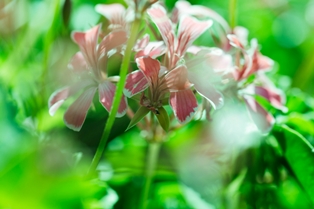
- Description: An epiphytic carnivorous plant with white flowers.
- Habitat: Found in Brazil.
- Uses: Grown in specialized collections for its unique characteristics.
Utricularia prehensilis
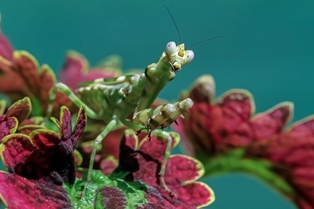
- Description: Features delicate, white or light purple flowers.
- Habitat: Found in tropical regions of Africa.
- Uses: Cultivated by enthusiasts of carnivorous plants.
Utricularia pubescens
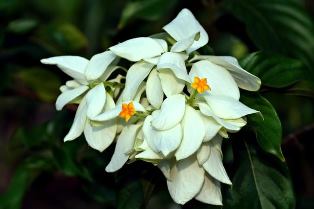
- Description: A small, terrestrial carnivorous plant with yellow flowers.
- Habitat: Native to tropical regions.
- Uses: Grown in specialized plant collections.
Utricularia purpurea
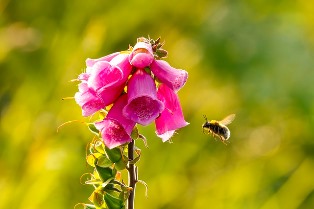
- Description: Known as purple bladderwort, it has purple flowers.
- Habitat: Found in wetlands in North America.
- Uses: Cultivated in bog gardens and by enthusiasts of carnivorous plants.
Utricularia radiata
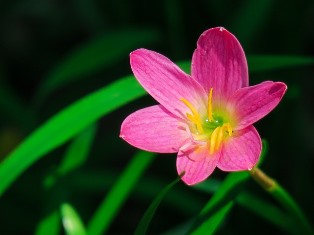
- Description: An aquatic carnivorous plant with yellow flowers.
- Habitat: Found in the eastern United States.
- Uses: Grown in water gardens and by carnivorous plant collectors.
Utricularia resupinata

- Description: Features small, lavender flowers and is an aquatic carnivorous plant.
- Habitat: Found in North America.
- Uses: Cultivated in water gardens and specialized plant collections.
Utricularia sandersonii

- Description: Known for its tiny, white, bunny-like flowers.
- Habitat: Native to South Africa.
- Uses: Popular among carnivorous plant enthusiasts for its unique flowers.
Utricularia simmonsii

- Description: A terrestrial carnivorous plant with small, white flowers.
- Habitat: Found in Australia.
- Uses: Grown by collectors of carnivorous plants.
Utricularia striata
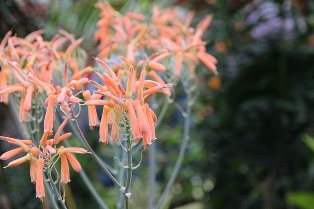
- Description: Features yellow flowers with distinct stripes.
- Habitat: Found in the southeastern United States.
- Uses: Cultivated in bog gardens and by carnivorous plant enthusiasts.
Utricularia subulata
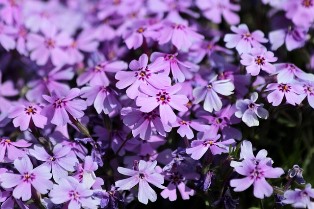
- Description: A terrestrial carnivorous plant with tiny, yellow flowers.
- Habitat: Found in tropical and subtropical regions.
- Uses: Grown in specialized plant collections.
Utricularia uniflora

- Description: Features small, white or pale purple flowers.
- Habitat: Native to Australia.
- Uses: Cultivated by carnivorous plant enthusiasts.
Utricularia vulgaris
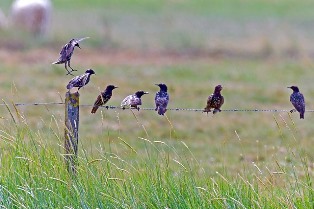
- Description: Known as common bladderwort, it has yellow flowers.
- Habitat: Found in freshwater habitats in Europe, Asia, and North America.
- Uses: Grown in water gardens and by carnivorous plant collectors.
Uvularia grandiflora (Large-flowered Bellwort)

- Description: Features large, nodding yellow flowers.
- Habitat: Native to eastern North America.
- Uses: Grown for ornamental purposes in shade gardens.
Uvularia perfoliata (Perfoliate Bellwort)

- Description: Known for its unique, perfoliate leaves and yellow flowers.
- Habitat: Found in eastern North America.
- Uses: Popular in woodland and shade gardens.
Uvularia sessilifolia (Sessile-leaved Bellwort)

- Description: Features delicate, nodding yellow flowers and sessile leaves.
- Habitat: Native to North America.
- Uses: Grown for ornamental purposes in woodland gardens.
Ulex gallii (Western Gorse)
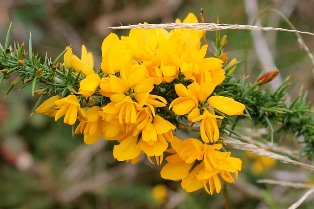
- Description: A spiny shrub with bright yellow flowers.
- Habitat: Found in western Europe, particularly in heathlands.
- Uses: Provides habitat for wildlife and used in natural landscaping.
Umbilicus rupestris (Navelwort)
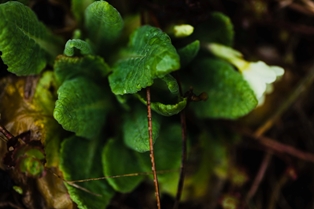
- Description: Features succulent, round leaves and small, bell-shaped flowers.
- Habitat: Found on rocky cliffs and walls in Europe.
- Uses: Grown in rock gardens and for its medicinal properties.
Urceolina peruviana

- Description: Displays bright yellow, bell-shaped flowers.
- Habitat: Native to Peru.
- Uses: Cultivated for ornamental purposes in gardens and greenhouses.
Urceolina pendula

- Description: Known for its pendulous, yellow flowers.
- Habitat: Native to South America.
- Uses: Grown as ornamental plants in gardens and greenhouses.
Urceolina purpurea

- Description: Features striking purple flowers.
- Habitat: Native to South America.
- Uses: Cultivated for ornamental purposes in gardens and greenhouses.
Urtica dioica (Stinging Nettle)
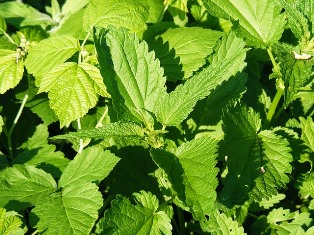
- Description: A perennial plant with serrated leaves covered in stinging hairs.
- Habitat: Found in temperate regions worldwide.
- Uses: Used for its medicinal properties and in culinary applications.
Urginea maritima (Sea Squill)
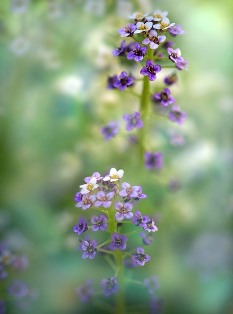
- Description: Features tall spikes of white or pink flowers.
- Habitat: Native to the Mediterranean region.
- Uses: Grown for ornamental purposes and used in traditional medicine.
Urginea undulata

- Description: Known for its wavy-edged leaves and small white flowers.
- Habitat: Found in the Mediterranean region.
- Uses: Cultivated for ornamental purposes and in traditional medicine.
Ulex parviflorus
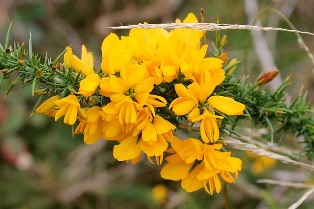
- Description: A spiny shrub with small, yellow flowers.
- Habitat: Native to southwestern Europe.
- Uses: Used in natural landscaping and for habitat restoration.
Ulex micranthus
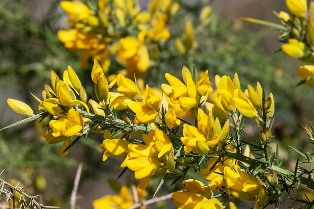
- Description: A smaller species of gorse with tiny, yellow flowers.
- Habitat: Found in western Europe.
- Uses: Used in natural landscaping and habitat restoration.
Ulex australis
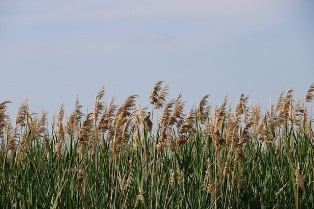
- Description: A spiny shrub with yellow flowers, native to the Iberian Peninsula.
- Habitat: Found in southwestern Europe.
- Uses: Provides habitat for wildlife and used in natural landscaping.
Ulex densus

- Description: Known for its dense, spiny growth and bright yellow flowers.
- Habitat: Found in southwestern Europe.
- Uses: Used in habitat restoration and natural landscaping.
Ulex breoganii
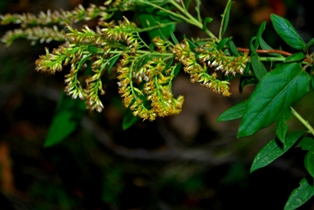
- Description: A species of gorse with yellow flowers.
- Habitat: Found in western Europe.
- Uses: Used in natural landscaping and for habitat restoration.
Ulex cantabricus
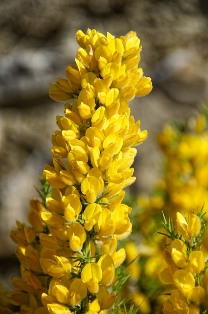
- Description: A spiny shrub with yellow flowers, native to the Cantabrian Mountains.
- Habitat: Found in northern Spain.
- Uses: Provides habitat for wildlife and used in natural landscaping.
Ulex eriocladus
- Description: Features spiny branches and yellow flowers.
- Habitat: Found in western Europe.
- Uses: Used in natural landscaping and habitat restoration.
Ulex granatensis
- Description: A species of gorse with yellow flowers, native to the Iberian Peninsula.
- Habitat: Found in southwestern Europe.
- Uses: Provides habitat for wildlife and used in natural landscaping.
Ulex jussiaei
- Description: A spiny shrub with yellow flowers.
- Habitat: Found in western Europe.
- Uses: Used in natural landscaping and habitat restoration.
Ulex minor subsp. subsericeus
- Description: A subspecies of dwarf gorse with small, yellow flowers.
- Habitat: Found in Europe.
- Uses: Used in natural landscaping and habitat restoration.
Ulex parviflorus subsp. parviflorus
- Description: A subspecies of gorse with small, yellow flowers.
- Habitat: Found in southwestern Europe.
- Uses: Provides habitat for wildlife and used in natural landscaping.
Ulex parviflorus subsp. subsericeus
- Description: A subspecies of gorse with small, yellow flowers.
- Habitat: Found in southwestern Europe.
- Uses: Provides habitat for wildlife and used in natural landscaping.
Ulex querceifolius
- Description: A spiny shrub with yellow flowers.
- Habitat: Found in southwestern Europe.
- Uses: Used in natural landscaping and habitat restoration.
Ulex subsericeus
- Description: A spiny shrub with yellow flowers.
- Habitat: Found in southwestern Europe.
- Uses: Used in natural landscaping and habitat restoration.
Ulex sulphureus
- Description: A species of gorse with yellow flowers.
- Habitat: Found in southwestern Europe.
- Uses: Used in natural landscaping and for habitat restoration.
Ulex europaeus subsp. europaeus
- Description: A subspecies of common gorse with bright yellow flowers.
- Habitat: Native to western Europe.
- Uses: Provides habitat for wildlife and used in hedgerows.
Ulex europaeus subsp. latebracteatus
- Description: A subspecies of common gorse with yellow flowers.
- Habitat: Found in western Europe.
- Uses: Provides habitat for wildlife and used in hedgerows.
Ulex europaeus subsp. hibernicus
- Description: A subspecies of common gorse with yellow flowers.
- Habitat: Found in Ireland and the UK.
- Uses: Provides habitat for wildlife and used in hedgerows.
Ulex gallii subsp. gallii
- Description: A subspecies of western gorse with yellow flowers.
- Habitat: Found in western Europe.
- Uses: Provides habitat for wildlife and used in natural landscaping.
Ulex gallii subsp. nanus
- Description: A dwarf subspecies of western gorse with yellow flowers.
- Habitat: Found in western Europe.
- Uses: Used in natural landscaping and habitat restoration.
Ulex gallii subsp. subsericeus
- Description: A subspecies of western gorse with yellow flowers.
- Habitat: Found in western Europe.
- Uses: Used in natural landscaping and habitat restoration.
Ulex gallii subsp. latebracteatus
- Description: A subspecies of western gorse with yellow flowers.
- Habitat: Found in western Europe.
- Uses: Used in natural landscaping and habitat restoration.
Ulex minor subsp. minor
- Description: A subspecies of dwarf gorse with small, yellow flowers.
- Habitat: Found in Europe.
- Uses: Used in natural landscaping and habitat restoration.
Ulex minor subsp. nanus
- Description: A dwarf subspecies of gorse with small, yellow flowers.
- Habitat: Found in Europe.
- Uses: Used in natural landscaping and habitat restoration.
Ulex parviflorus subsp. gallii
- Description: A subspecies of gorse with small, yellow flowers.
- Habitat: Found in southwestern Europe.
- Uses: Provides habitat for wildlife and used in natural landscaping.
Ulex parviflorus subsp. minor
- Description: A subspecies of gorse with small, yellow flowers.
- Habitat: Found in southwestern Europe.
- Uses: Provides habitat for wildlife and used in natural landscaping.
Ulex parviflorus subsp. latebracteatus
- Description: A subspecies of gorse with small, yellow flowers.
- Habitat: Found in southwestern Europe.
- Uses: Provides habitat for wildlife and used in natural landscaping.
Ulex subsericeus subsp. europaeus
- Description: A subspecies of gorse with yellow flowers.
- Habitat: Found in southwestern Europe.
- Uses: Used in natural landscaping and habitat restoration.
Ulex subsericeus subsp. gallii
- Description: A subspecies of gorse with yellow flowers.
- Habitat: Found in southwestern Europe.
- Uses: Used in natural landscaping and habitat restoration.
Ulex subsericeus subsp. minor
- Description: A subspecies of gorse with yellow flowers.
- Habitat: Found in southwestern Europe.
- Uses: Used in natural landscaping and habitat restoration.
Ulex subsericeus subsp. parviflorus
- Description: A subspecies of gorse with yellow flowers.
- Habitat: Found in southwestern Europe.
- Uses: Used in natural landscaping and habitat restoration.
Ulex subsericeus subsp. subsericeus
- Description: A subspecies of gorse with yellow flowers.
- Habitat: Found in southwestern Europe.
- Uses: Used in natural landscaping and habitat restoration.
Ulex sulphureus subsp. europaeus
- Description: A subspecies of gorse with yellow flowers.
- Habitat: Found in southwestern Europe.
- Uses: Used in natural landscaping and habitat restoration.
Ulex sulphureus subsp. gallii
- Description: A subspecies of gorse with yellow flowers.
- Habitat: Found in southwestern Europe.
- Uses: Used in natural landscaping and habitat restoration.
Ulex sulphureus subsp. minor
- Description: A subspecies of gorse with yellow flowers.
- Habitat: Found in southwestern Europe.
- Uses: Used in natural landscaping and habitat restoration.
Ulex sulphureus subsp. parviflorus
- Description: A subspecies of gorse with yellow flowers.
- Habitat: Found in southwestern Europe.
- Uses: Used in natural landscaping and habitat restoration.
Ulex sulphureus subsp. subsericeus
- Description: A subspecies of gorse with yellow flowers.
- Habitat: Found in southwestern Europe.
- Uses: Used in natural landscaping and habitat restoration.
Ulex sulphureus subsp. sulphureus
- Description: A subspecies of gorse with yellow flowers.
- Habitat: Found in southwestern Europe.
- Uses: Used in natural landscaping and habitat restoration.
Ulex europaeus subsp. gallii
- Description: A subspecies of common gorse with yellow flowers.
- Habitat: Found in western Europe.
- Uses: Provides habitat for wildlife and used in hedgerows.
Ulex europaeus subsp. minor
- Description: A subspecies of common gorse with yellow flowers.
- Habitat: Found in Europe.
- Uses: Provides habitat for wildlife and used in hedgerows.
Ulex europaeus subsp. parviflorus
- Description: A subspecies of common gorse with small, yellow flowers.
- Habitat: Found in southwestern Europe.
- Uses: Provides habitat for wildlife and used in natural landscaping.
Ulex europaeus subsp. sulphureus
- Description: A subspecies of common gorse with yellow flowers.
- Habitat: Found in southwestern Europe.
- Uses: Provides habitat for wildlife and used in hedgerows.

